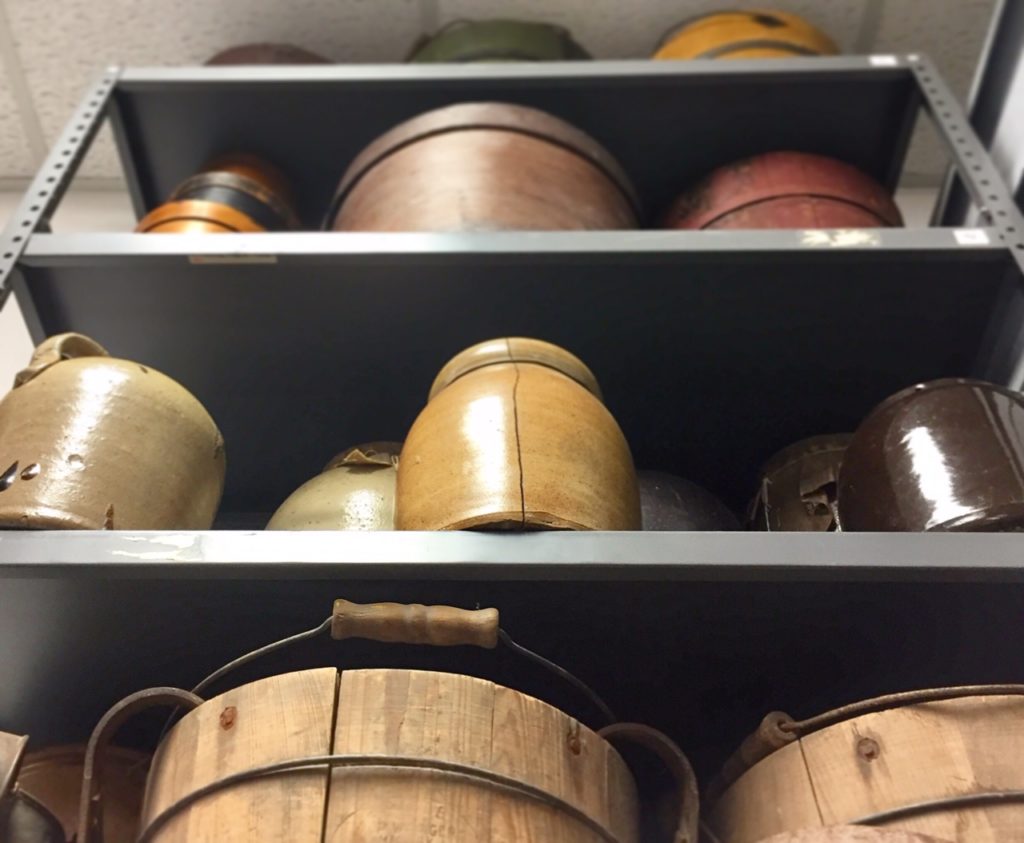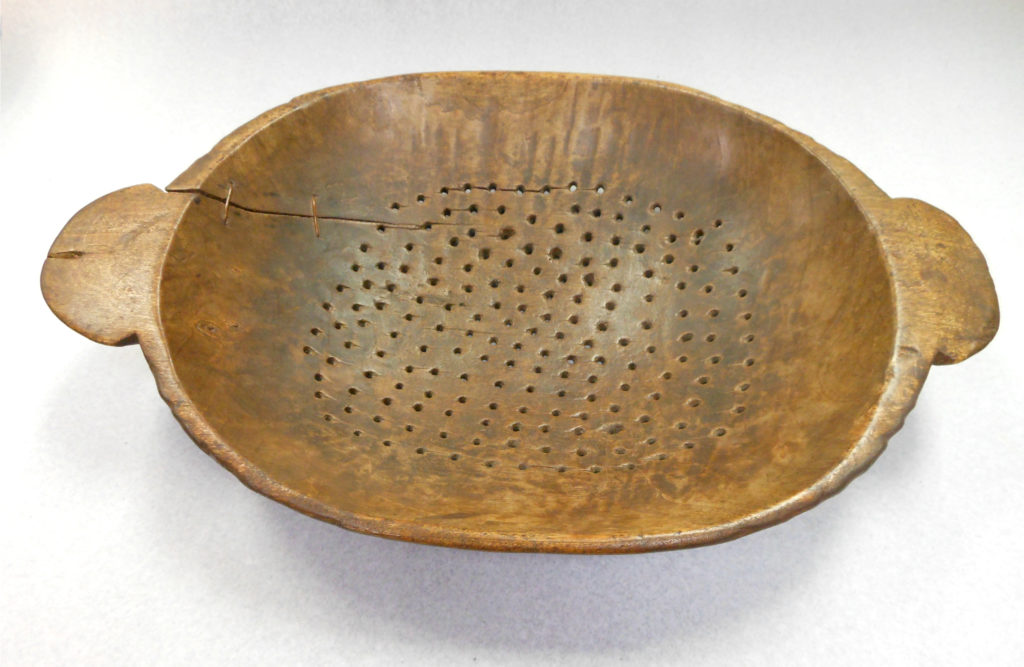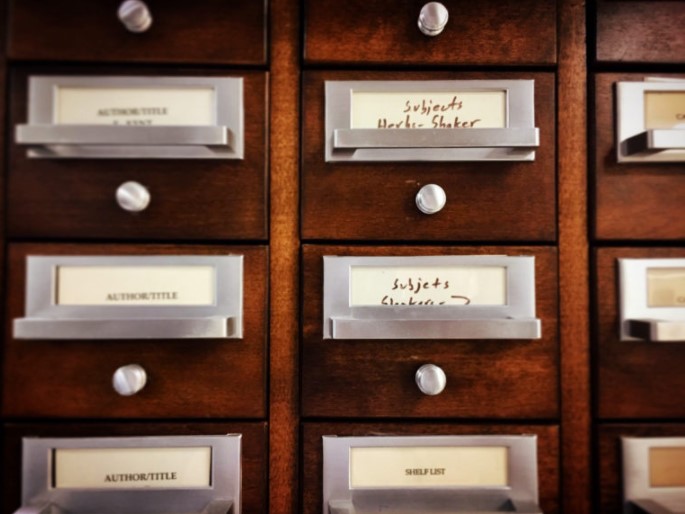Laura Webb, Program Specialist
That’s a wrap, folks! My time officially working on the NEH grant project has come to an end, and so does this blog series. While I’ve been the primary public “voice” of the project over the last six months, this has truly been a team effort, and so I wanted to leave you with a more holistic view of what this work has entailed. In their own words, let me introduce just some of the many other people who have had a role in this project over the last six months.
- Billy Rankin, Vice President of Public Programming & Organizational Strategy, “took an executive lead with this project, supporting the efforts of our management and collections team.”
- Jacob Glover, Director of Public Programs and Education, “fulfilled the oversight role after the reorganization of our department’s leadership positions.”
- Maggie McAdams, Education and Engagement Manager, “lent additional guidance to how to effectively use this content once updated.”
- Becky Soules, Curator of Collections, was“hired in November of 2020 as the new Curator of Collections, and had the unique experience of joining the project after it was well underway.”
- Melissa Donahoo, Development Coordinator, “wrote the original grant narrative for the request (with input from the Grant Team) and put together the application for submission.” She also “ensured we stayed on track and on budget; this included submitting an interim grant report and accounting reports and requests.”
- Shelby Jones, Director of Communications, “posted and promoted the blog submissions drafted by Laura Webb on the Shaker Village website and social media platforms.”

Earlier this week, I interviewed the lovely folks above about different aspects of this grant project. In terms of what their favorite aspects were, there was a wide variety of responses! Not to toot my own horn, but Jacob, Becky, and Shelby all mentioned really enjoying reading this very blog series. But on a more important note, getting in-depth looks into the collection were valuable for folks, too!
- “We have so much incredible content and so many resources that are not currently available to the public. This project helps us to better fulfill our mission as an organization.” – Billy
- “My favorite aspect of the project has been the opportunity to take a deep dive into the collection and uncover the stories about many artifacts that I had heretofore not had the chance to research or look into.” – Jacob
- “I remember one day looking up an object that I had looked up many times before, and suddenly seeing so much more useful information. I was so pleased with how organized the data was and, of course, how much information I had access to once the object record was updated.” – Maggie
- “The most exciting part of this project has been to serve as a jumping-off point for further collections work. A number of new projects that we’ve started in 2021 are only possible because of the work already completed as part of the CARES grant.” – Becky
Not to be too self-indulgent, but I also asked the team what their favorite blog posts in this series were. The overwhelming winner was “A Benign Spit-Shine,” with four votes!

- “It made me think of my mom giving me a ‘spit-shine’ before we went into Church on Sunday mornings, as we regularly engaged in pick-up football games with the others kids after Sunday school and before service!” – Jacob
- “You mean it’s not ok to lick the artifacts?”– Melissa
That article also got votes from Billy and Maggie. With two votes (including one from Shelby), the runner-up was “Out of the Blue,” the post about cyanotypes. (If the math isn’t adding up for you, that’s because Maggie had it tied with “Benign Spit-Shine.” Please don’t demand a recount!) An honorable mention goes to “Prying with a Purpose,” with valuable commentary:
- “I think it’s too easy to view research libraries and archives as adjunct features of museums, used only for visiting researchers and for generating the raw content that’s disseminated to visitors through exhibits and programming. It’s a good reminder for me, moving forward, to consider other ways to shed light on the ‘behind-the-scenes’ aspects of curatorial work and collections management so that it’s understandable and accessible to the visiting public.” – Becky

The whole year of 2020 was challenging for…well, literally everyone in the world. In terms of this project, however, one challenge in particular ran as a common thread. A few months into this project, Aaron Genton, our Curator of Collections, left Pleasant Hill for a position in Montana! This meant that, until our new curator was hired in November, I worked in the archives more-or-less autonomously. In addition, our department was reorganized in the interim period. Here’s what some folks have to say about it:
- “During the course of this project I assumed additional responsibilities for the supervision of the Collections Department and the hiring of a new Curator of Collections.” – Billy
- “Coming to the project about a month before the grant funding ended, I was really mindful of the hard work and long hours that had already been put in by Laura and other staff. I really wanted to be mindful of being the ‘interloper,’ while at the same time bringing fresh eyes, enthusiasm, and new ideas to help get the project finished at the end of what has been a very difficult year.” – Becky
Another challenge was the sheer enormity of the task! (Do y’all remember how we eat an elephant?) One response mirrored my own thoughts:
- “The biggest challenge has been reigning in my expectations! We have so much great information on the collection that I would love to be able to share with the public — but, to get to that point, it has been important to make sure we get the system set up properly and to feature the correct information. All of these things take time and care!” – Jacob
In tackling these challenges, all of us learned a lot and gained many new skills. In particular, many of us learned a lot about PastPerfect, as well as about the information it currently holds!
- “I’ve learned a great deal about the PastPerfect online functions because of your knowledge and communication. I definitely want to learn more about its capabilities, but that was fun for me.” – Maggie
- “It gave me a great excuse to get in-depth with PastPerfect very early during my time at SVPH. Spending so much time in PastPerfect has given me a much better understanding of my department predecessors and has taught me a lot about the ways SVPH has collected, cataloged, and tracked its artifacts over the past 60+ years.”- Becky
- “I enjoyed learning more about the important people in the post-Shaker period who were instrumental in helping us get to where we are today. I know that there was a curated section of this information in the Pieces of Pleasant Hill exhibit, but getting the chance to take a more unfettered look at the ‘raw’ data has been something that I have enjoyed.” – Jacob
Finally, I asked my team where they hope to see this work go in the future, and how they hope to see this information used. This particular grant-funded project may have ended, but it’s only the beginning of our efforts to organize and digitize our collections content! Even while looking back at the progress we’ve made so far, all of us are still continuing to look forward.
- “This work must continue for SVPH. The digital content will be a critical mechanism for creating exhibitions and online research.” – Billy
- “I’m excited to get PastPerfect Online published and usable for the public and researchers. I would also like to annotate many of the entries with much more historical content and information.” – Jacob
- “Moving forward, the fun challenge will be how we interpret and curate this information to make it, not just accessible, but meaningful to the public.” – Maggie
- “I’m delighted that the work started under the NEH Cares grant will continue in the coming months and years as we update our records, research our collections, and make all of this information available through an online platform. Although nothing can ever replace a personal visit to SVPH, I hope our expanded digital resources can help us reach new audiences and forge new connections!” – Becky
- “I see so many different ways our collections can support our mission in a digital format. This project provided an avenue for to reach our guests in a time when fewer were visiting. I’d like to see us expand on the work you’ve completed to create curated digital experiences.” – Melissa
How about you, my lovely readers? What have you learned from this series? What was your favorite post? What are you most looking forward to about our upcoming online collections resource? Please keep in touch through our social media, or shoot me an email at [email protected] – I’d love to hear from you!
Shaker Village of Pleasant Hill was awarded a CARES grant through The National Endowment for the Humanities in June 2020. Funding from this grant award supported two activities to enhance digital humanities initiatives at SVPH, including Laura Webb’s work to review our collection records and prepare them for publishing in a public digital database.